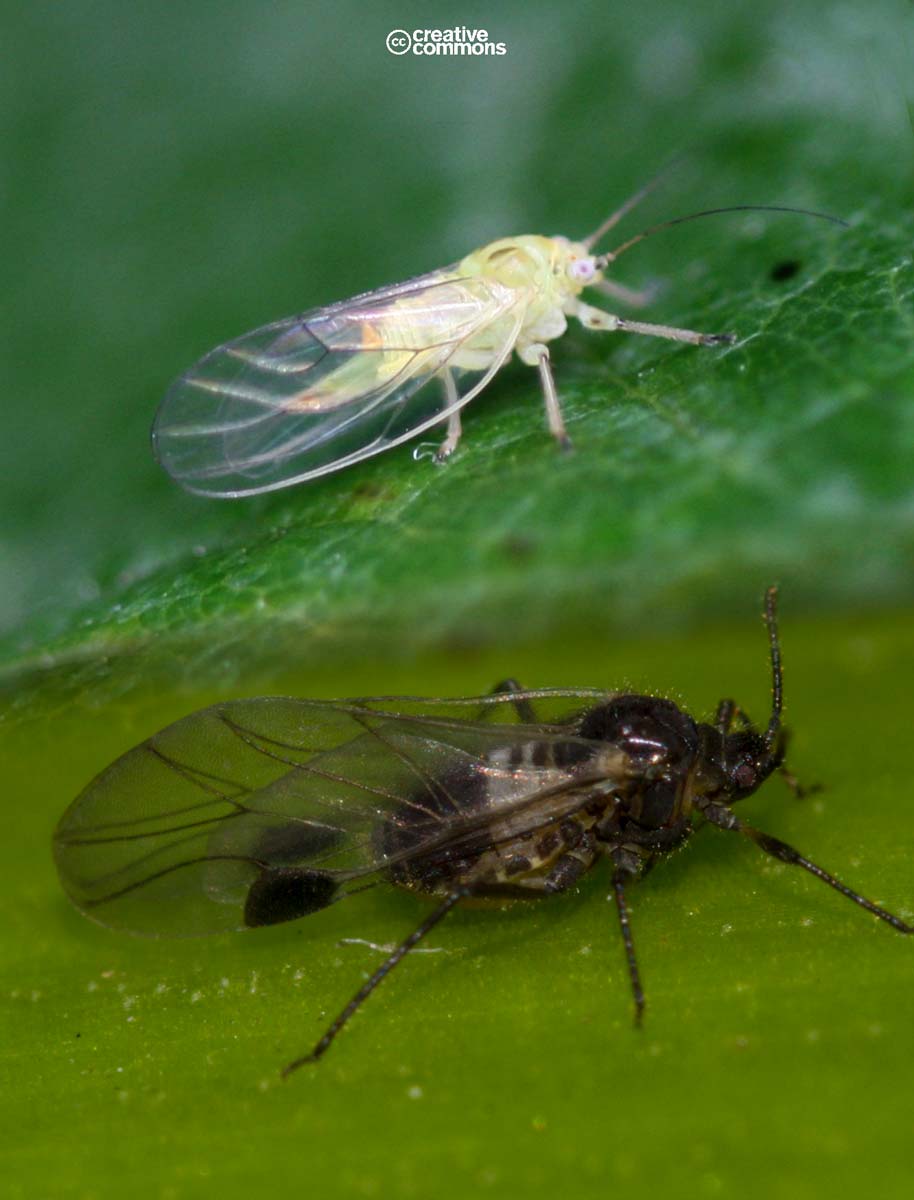
The several species of these aphid size insects, which suck sap primarily from leaf undersides, are sometimes called jumping plant lice. They feed on a variety of plants, including fruit trees; the pear psylla (shown) is the most damaging pear tree pest in the United States. Psyllids are extremely variable in appearance. The greenish or brownish adults could be mistaken for miniature cicadas; they have enlarged hind legs for leaping, clear wings, and long antennae. In the immature stage, some species are mobile and may be covered with a white, waxy coating, making them look like mealybugs. The young of other species resemble scale insects-they’re immobile and feed in a single location.
Target: Many plants, including fruit trees and small fruits, acacia, boxwood, eucalyptus, eugenic, laurel, magnolia, pepper trees, potatoes, and tomatoes.
Damage: Leaves turn yellow, curl up, and eventually die; fruit is scarred. Liquid honeydew excreted by pear and blue gum psyllids attracts ants and encourages sooty mold. Many types of psyllids transmit viruses.
Life cycle: The cycle varies with the species, but there are many overlapping generations each year. The pests over winter as adults or eggs.
Notes: Control ants or they’ll protect psyllids from natural enemies.














